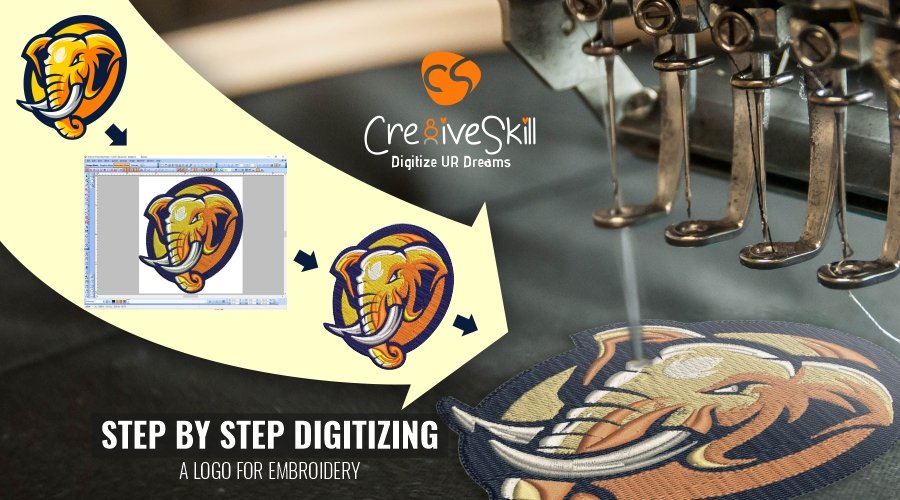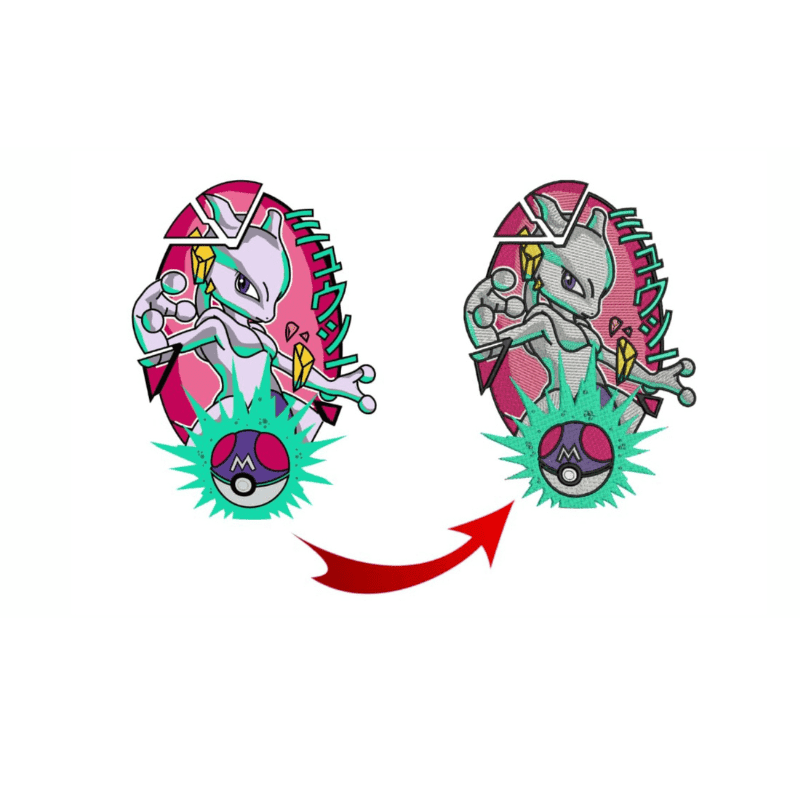Custom Digitizing for Embroidery: Customized to Your Needs
Custom Digitizing for Embroidery: Customized to Your Needs
Blog Article
Mastering the Needlework Digitizing Process: Your Ultimate Overview
Needlework digitizing is a meticulous craft that requires precision and proficiency to translate elaborate layouts into electronic layouts for equipment embroidery. As craftsmens get started on this trip to grasp the needlework digitizing procedure, a thorough understanding of the basics establishes the foundation for excellence.

Recognizing Embroidery Digitizing Essentials
Embroidery digitizing fundamentals create the foundation whereupon elaborate styles are equated right into machine-readable formats for precise sewing. This preliminary step in the needlework digitizing process is important for making sure that the last stitched product is a devoted depiction of the initial design. Understanding needlework digitizing basics includes understanding crucial principles such as stitch kinds, sew instructions, thickness, underlay, and draw settlement.
Sew types play a vital role in determining the visual and textural end result of the embroidered design. By selecting the appropriate stitch type, whether it be satin, fill, or running stitch, digitizers can attain the desired result and improve the general high quality of the embroidery. Furthermore, stitch instructions affects the circulation and dimension of the design, while density identifies the spacing and coverage of the stitches.
Moreover, rug stitching supplies stability to the layout by protecting the fabric and preventing distortion throughout the embroidery procedure. Pull compensation is one more necessary factor to consider to counteract the all-natural propensity of fabric to agreement when stitched. Grasping these embroidery digitizing essentials is basic for creating professional-quality embroidered products.
Selecting the Right Digitizing Software Application
Selecting the ideal digitizing software is a critical decision that substantially impacts the efficiency and high quality of the needlework digitizing procedure. Digitizing for Embroidery. When selecting the right digitizing software application, it is necessary to think about factors such as the intricacy of designs you intend to create, the user-friendliness of the software program, the degree of consumer assistance supplied, and the compatibility with your embroidery device
There are various digitizing software program choices offered in the market, ranging from fundamental programs for beginners to advanced software application for expert digitizers. Some prominent options include Wilcom EmbroideryStudio, Hatch Embroidery Software, and PulseID. These software use a vast array of devices and functions to help you produce detailed designs easily.
Before deciding, it is recommended to check out the various software application choices with totally free tests or demos to determine which one ideal matches your requirements. Furthermore, reviewing evaluations and looking for referrals from experienced digitizers can supply useful insights right into the strengths and weaknesses of each software (Digitizing for Embroidery). By meticulously reviewing your needs and contrasting the features of different digitizing software application, you can make an enlightened choice that improves your needlework digitizing process
Digitizing Devices and Strategies

Optimizing Style Settings for Needlework
Mastering the details of layout settings is basic in achieving optimum results in the embroidery digitizing process, building upon the structure laid by click over here understanding digitizing tools and strategies. When optimizing style settings for needlework, it is vital to consider variables such as stitch kind, density, padding, draw payment, and enrollment. Sew kind option affects the total look of the design, with choices like satin, fill, and running stitches supplying different structures and impacts. Density refers to the spacing and thickness of stitches, impacting the layout's coverage and sturdiness. Correct underlay stitching offers stability and stops material distortion, specifically for intricate layouts or on stretchy materials. Pull payment changes for fabric stretch throughout sewing, ensuring exact layout replication. Registration setups align various components of the style properly, keeping general design integrity. By fine-tuning these layout settings, embroiderers can improve the high quality and precision of their stitched productions.

Troubleshooting Common Digitizing Issues
When running into usual digitizing click to find out more concerns during the needlework procedure, it is important to recognize the origin and apply reliable solutions promptly. One usual trouble is stitch thickness problems, where stitches might be too dense, creating the material to tighten, or also sparse, bring about voids in the layout. Readjusting the stitch thickness settings in the digitizing software can help settle this concern.
An additional frequent difficulty is thread breaks during the needlework procedure. This can occur as a result of various reasons such as inaccurate tension setups, boring needles, or utilizing low-quality thread. Making sure correct maintenance of the needlework machine, consisting of routine needle changes and stress changes, can lessen the event of thread breaks.
Moreover, design enrollment mistakes can lead to misaligned aspects within the embroidery style. Checking the style alignment in the digitizing software and making required adjustments prior to stitching can help in avoiding this concern. By attending to these typical digitizing issues immediately and efficiently, you can make sure a smoother needlework process and high-grade finished items.
Conclusion
In conclusion, grasping the embroidery digitizing procedure needs a strong understanding of the fundamentals, the best selection of software program, and knowledge of devices and methods. Optimizing design setups and fixing usual digitizing concerns are crucial steps in making sure premium embroidery outcomes. By following these steps faithfully, one can accomplish accuracy and efficiency in the digitizing procedure.
Report this page